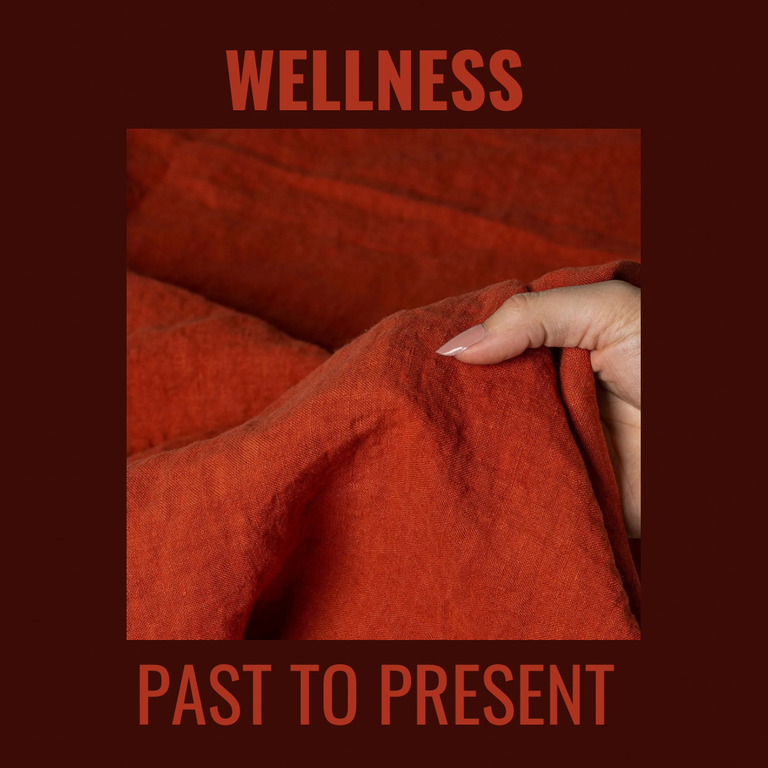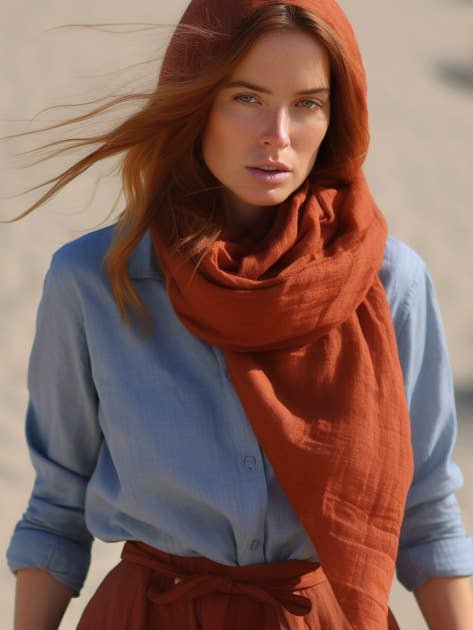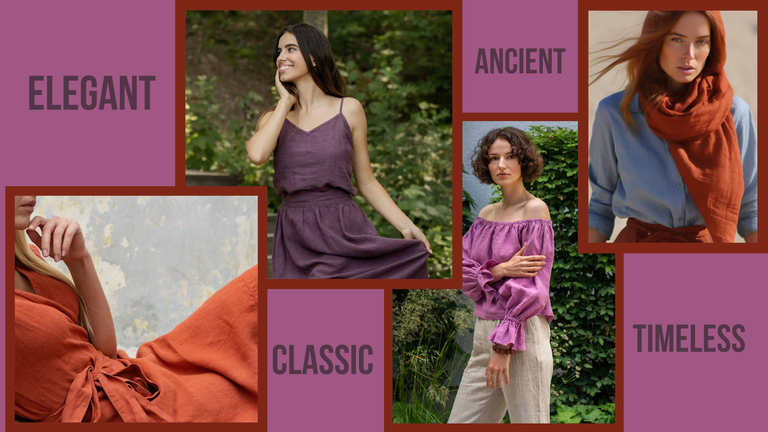
Linen, a fabric woven from the fibers of the flax plant, has a rich history that spans thousands of years. Its journey through time reflects not only the evolution of fashion but also its enduring appeal for health and comfort.
The origins of linen garments can be traced back to ancient civilizations, with evidence of linen textiles dating as far back as 4500 BC in Egypt. The Egyptians cherished linen for its luxurious feel and breathability, considering it a symbol of purity and wealth. The labor-intensive process of extracting fibers from flax plants and weaving them into linen cloth made it a prized possession, reserved for the elite.

As time progressed, linen's popularity spread across different cultures and regions. In ancient Greece, linen garments became a staple, valued for their coolness in hot climates. The lightweight and breathable nature of linen made it ideal for the Mediterranean climate, and its use extended to both everyday wear and special occasions.
During the Roman Empire, linen clothing remained prevalent. The Romans appreciated linen's versatility, using it for undergarments, tunics, and even bed linens. Linen garments were considered a sign of sophistication and were associated with cleanliness and comfort.
In the Middle Ages, linen continued to hold its ground as a preferred fabric, especially among the European aristocracy. The Renaissance era witnessed a surge in linen production, and its availability increased, making it more accessible to a broader audience. Linen garments became a symbol of social status and were worn by both men and women of various classes.

The Industrial Revolution marked a turning point in the history of linen garments. Technological advancements in spinning and weaving made linen production more efficient, leading to a widespread availability of affordable linen textiles. This democratization of linen clothing allowed it to become a staple for everyday wear, transcending social classes.
Throughout the 20th century, linen experienced both peaks and troughs in popularity. The fabric had its heyday during the 1920s and 1930s when lightweight and breathable clothing became fashionable. However, with the rise of synthetic fabrics in the mid-20th century, linen faced stiff competition. It wasn't until the late 20th century that there was a resurgence of interest in natural, eco-friendly materials, leading to a renewed appreciation for linen.
Linen's appeal is not merely historical; it extends to its unique health and comfort benefits. Linen is a natural temperature regulator, allowing air to circulate freely through the fabric. This breathability makes linen garments an excellent choice for warm weather, as they help the body stay cool and comfortable. Additionally, linen has moisture-wicking properties, absorbing and releasing perspiration quickly, making it an ideal choice for active individuals.
The health benefits of linen go beyond temperature regulation. Linen fibers have natural antibacterial and hypoallergenic properties, making linen garments suitable for those with sensitive skin or allergies. Unlike synthetic fabrics that may trap odors and bacteria, linen remains fresh and odor-free, contributing to a healthier and more comfortable wearing experience.

The comfort of linen clothing is a result of its soft texture and the way it drapes on the body. Linen fibers soften with each wash, enhancing the fabric's comfort over time. The relaxed and casual aesthetic of linen garments adds to their appeal, making them versatile for various occasions. Linen can effortlessly transition from casual daytime wear to more formal evening attire, showcasing its adaptability and timeless elegance.
In conclusion, the history of linen garments is a fascinating journey through time, reflecting cultural shifts, technological advancements, and changing fashion trends. From its origins in ancient Egypt to its resurgence in the modern era, linen has proven its enduring appeal. Beyond its aesthetic qualities, linen's health and comfort benefits make it a standout choice in the world of fashion, providing a sustainable and enjoyable alternative to synthetic materials.
https://wearablewellnessboutique.com
